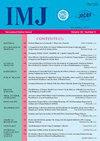四肢枪伤和非枪伤致创伤后神经病变和神经丛病的临床表现特点
Q4 Medicine
引用次数: 0
摘要
在和平时期的武装冲突和恐怖主义行为中,神经干和丛的创伤数量稳步增加。在战争中,周围神经损伤要常见得多,许多关于周围神经损伤和修复的知识都是基于作战经验。对创伤后神经病变和丛状病变的临床过程的研究有助于制定临床和神经病学标准以及外周神经系统创伤损伤的代偿性恢复反应,有助于评估神经系统各部分在补偿受损功能单元时的功能意义。为了研究创伤后枪伤、非枪伤神经病变和神经丛病变的临床表现特征,63名患者接受了临床和神经系统检查,包括局部和临床诊断、详细的记忆和主诉、神经肌电图和超声检查。运动障碍是常见的,其特征是相应肌肉群的周围性麻痹或麻痹,并伴有肌腱和骨膜反射减少或丧失。敏感性障碍是脱垂(麻醉、感觉迟钝)和刺激(感觉异常、感觉过度、感觉过度)的组合。外伤性神经病中的自主性疾病(血管性、分泌性和营养性)因周围神经的临床特征而异。血管疾病更常见于神经结构的部分损伤,并伴有局部水肿。在分泌障碍中,神经传导受损最常见的症状是出汗障碍。在疼痛综合征(即焦痛)的临床表现中,以烧灼感为主。在严重的病例中,疼痛综合征的强度非常高,在某些情况下,感官刺激会加剧疼痛。焦痛的临床特征是,当加热受伤的肢体时疼痛加剧,冷却时疼痛减轻,这是一种“湿漉漉的抹布症状”。了解临床特征可以在病理学的早期阶段检测周围神经系统病变,进行动态临床和神经学观察和治疗,及时运用现代附加研究方法,解决进一步治疗策略,恢复肢体功能,提高生活质量。关键词:创伤后神经病变和丛神经病变,周围神经系统,神经和丛神经枪伤。本文章由计算机程序翻译,如有差异,请以英文原文为准。
FEATURES OF CLINICAL MANIFESTATIONS OF POST-TRAUMATIC NEUROPATHIES AND PLEXOPATHIES RESULTED FROM GUNSHOT AND NON-GUNSHOT INJURIES OF EXTREMITIES
The number of traumatic injuries to nerve stems and plexuses is steadily increasing in peacetime during armed conflicts and terrorist acts. In wartime, peripheral nerve injuries are much more common, and a great deal of the knowledge about peripheral nerve damage and repair is based on combat experience. The study of the clinical course of post−traumatic neuropathies and plexopathies contributes to the development of clinical and neurological criteria and compensatory−restorative responses in traumatic lesions of the peripheral nervous system, helps to assess the functional significance of various parts of the nervous system when compensating a damaged functional unit. To study the features of clinical manifestations of post−traumatic gunshot and non−gunshot neuropathies and plexopathies, 63 patients underwent clinical and neurological examination with topical and clinical diagnoses, collection of detailed anamnesis and complaints, electroneuromyography and ultrasound examination. Movement disorders, characterized by peripheral paresis or plegia of the corresponding muscle group and accompanied with a reduced or lost tendon and periosteal reflexes, were common. Sensitivity disorders were a combination of prolapse (anesthesia, hypoesthesia) and irritation (paresthesia, hyperpathy, hyperesthesia). Autonomic disorders (vascular, secretory and trophic) in traumatic neuropathies differ depending on the clinical individuality of peripheral nerves. Vascular disorders were more often detected with partial damage to nerve structures and were accompanied by local edema. Of the secretory disorders, the most constant sign of impaired nerve conduction was sweating disorder. In the clinical picture of the pain syndrome, i.e. causalgia, the pain sensations by type of burning dominated. The intensity of the pain syndrome in severe cases was very high, in some cases the pain was exacerbated by irritation of the senses. The clinical picture of causalgia is characterized by an increased pain when warming the injured limb and it reduced when cooled, that is a "symptom of a wet rag." Knowledge of clinical features allows the detection of the peripheral nervous system lesions at the early stages of pathology, performance of dynamic clinical and neurological observation and treatment, timely use of modern additional research methods to address further treatment tactics that restore limb function, improve quality of life.
Key words: post−traumatic neuropathy and plexopathy, peripheral nervous system, gunshot wounds of nerves and plexuses.
求助全文
通过发布文献求助,成功后即可免费获取论文全文。
去求助
来源期刊

International Medical Journal
医学-医学:内科
自引率
0.00%
发文量
21
审稿时长
4-8 weeks
期刊介绍:
The International Medical Journal is intended to provide a multidisciplinary forum for the exchange of ideas and information among professionals concerned with medicine and related disciplines in the world. It is recognized that many other disciplines have an important contribution to make in furthering knowledge of the physical life and mental life and the Editors welcome relevant contributions from them.
The Editors and Publishers wish to encourage a dialogue among the experts from different countries whose diverse cultures afford interesting and challenging alternatives to existing theories and practices. Priority will therefore be given to articles which are oriented to an international perspective. The journal will publish reviews of high quality on contemporary issues, significant clinical studies, and conceptual contributions, as well as serve in the rapid dissemination of important and relevant research findings.
The International Medical Journal (IMJ) was first established in 1994.
 求助内容:
求助内容: 应助结果提醒方式:
应助结果提醒方式:


